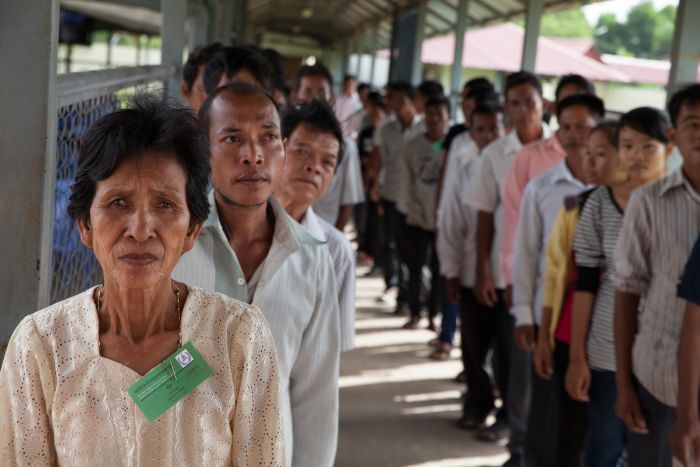The “Lessons in Leadership” course examines case studies, including the Holocaust and contemporary events, and draws on best practices from the field of mass atrocity prevention to examine how criminal justice professionals—at the executive and command level—can lead units and institutions with an atrocity prevention lens. This means understanding various kinds of mass atrocities; recognizing risks, warning signs, and triggers of mass atrocities; taking action to mitigate or decrease the risk of mass atrocities; and participating in a broad range of transitional justice processes and reforms to account for past violence and prevent recurrence.
The Guide to Criminal Justice and Preventing Mass Atrocities complements this curriculum and serves as a foundation text for the course modules.
View Course Modules in English
Time
The course includes nine modules, and the total run time is approximately 7 to 9 hours (depending on the incorporation of optional exercises). Instructors may choose to run the full course or select modules depending on their needs.
Participants
The course envisions a mixed audience of various criminal justice professionals—for example, law enforcement, judges, and prosecutors—serving in mid- to senior-level leadership positions within their respective institutions. Including participants from a range of criminal justice professions can help break professional silos and enhance discussions. However, the course or individual modules may also be run with participants from a single profession.
When recruiting participants for the course, the support and buy-in of senior leadership within participants’ institutions is necessary. Instructors should work to build partnerships with chiefs of police, chief justices, or other senior officials within the institutions the training is being provided for and to familiarize them with course content. This serves two purposes: (1) emphasizing for participants the importance of the course content and that it is a priority for their leadership, and (2) fostering an institutional culture that welcomes participants to share their learnings from the course with colleagues and to implement atrocity prevention measures as a result of the course.
Instructors may wish to invite senior leaders to give opening remarks at the beginning of the course to encourage this kind of partnership. In situations where participants do not have the support of their institutional leadership for their participation in the course or where leadership is ambivalent about their participation, instructors should be attuned to sensitivities related to potential repercussions for participants for attending the course or attempting to implement course content afterward.
Framing
Instructors may on occasion face resistance from professionals or institutional leadership to the idea of attending a course on mass atrocities. In framing the course, it can be useful to highlight the leadership aspects of the curriculum and to emphasize the important role leaders within criminal justice institutions can play in identifying broader trends within society, raising awareness, and working toward prevention. It may also be useful to note that mass atrocity risk exists in all countries to some degree and is not unique to participants’ countries. The Lessons in Leadership course builds on decades of Museum programming for US law enforcement, judges, and other professionals, as well as members of the military from the United States and globally, all of whom play a critical role before, during, and after mass atrocities.
In countries with a recent history of mass atrocities, instruction should take into account the possibility that participants may be operating in institutions alongside perpetrators or may be members of targeted communities themselves. Instructors may wish to share their own background and connection to the topic of mass atrocities when introducing the course, in order to acknowledge that others may have personal connections to the topic too.
It is possible some participants may feel certain changes are out of their reach or too large. The course aims to empower, or reinforce, that every participant is a leader and they are capable of making enhancements or changes, even if smaller, within their circle of influence or area of responsibility toward the goal of atrocity prevention.
Sensitive Content
The Lessons in Leadership course contains sensitive imagery and content throughout the modules, including some graphic descriptions of violence. Instructors should warn participants before showing video clips or images that contain graphic imagery or descriptions because content can be difficult—particularly for those who are members of affected communities. The modules are intentionally designed to center voices of survivors and others from communities affected by mass atrocities. These voices are included to help balance sensitive imagery and to emphasize the humanity of those affected by mass atrocities. They should not be removed.
Language
All course materials are provided in English and French, but instructors may translate them to run the course with participants who are not proficient in English or French.
Location
The course is designed to be run as an in-person session over the course of 1–2 days, but it could also be adapted for a virtual setting.
Instructor Preparation
The Guide to Criminal Justice and Preventing Mass Atrocities provides essential background and examples to support the content in this course and the development of other prevention programs.
Before the course, instructors should make an effort to do some background research on the participants’ countries of origin to inform conversations throughout the modules. This could include the following:
- Instructors can search for information on individual countries at risk for mass atrocities through the Museum’s Early Warning Project
- General information and country profiles can also be found on the US Department of State website
- If possible, instructors may wish to research which laws or treaties exist in participants’ countries related to mass atrocity prevention, or to research laws regarding hate speech in participants’ countries if running Option A (addressing dangerous speech) for Module 5
Teaching Holocaust history requires a high level of sensitivity and keen awareness of the complexity of the subject matter. Instructors can find guidelines for teaching about the Holocaust on the museum's website.




